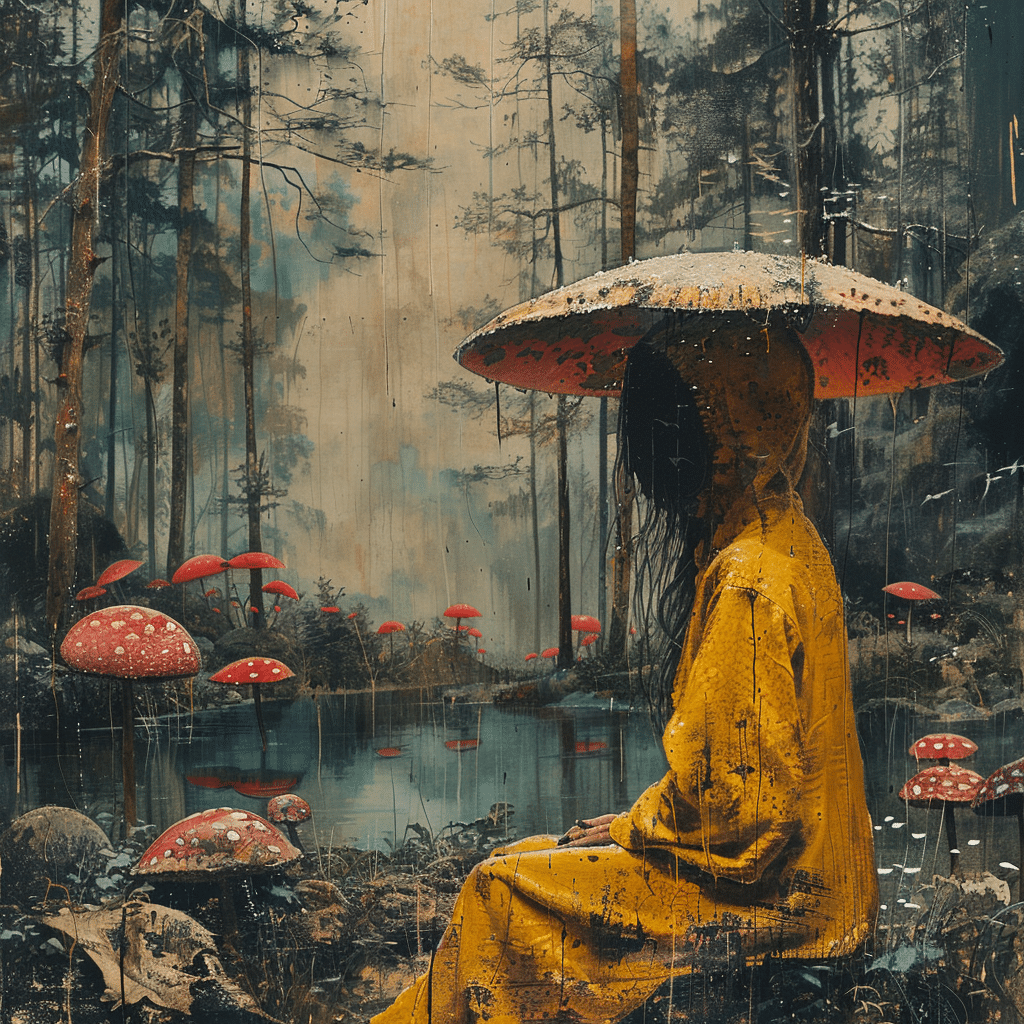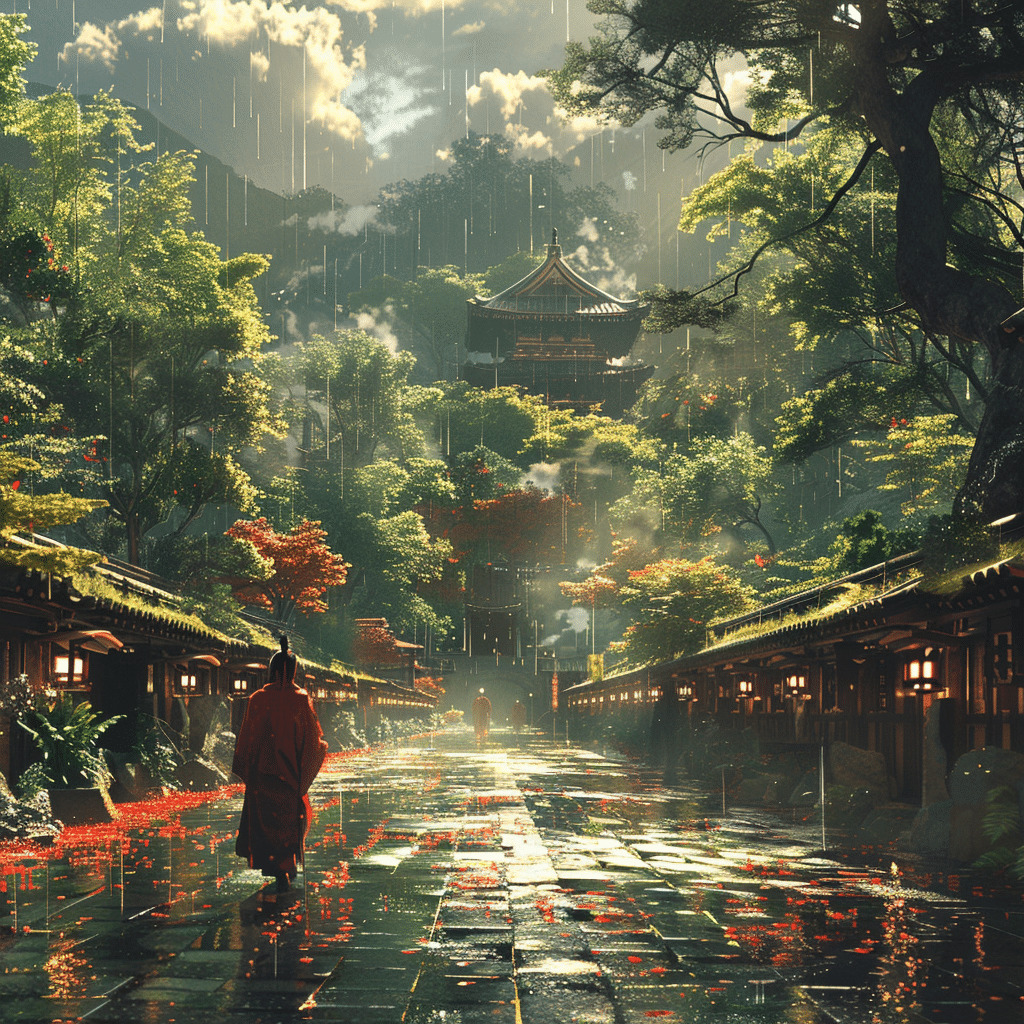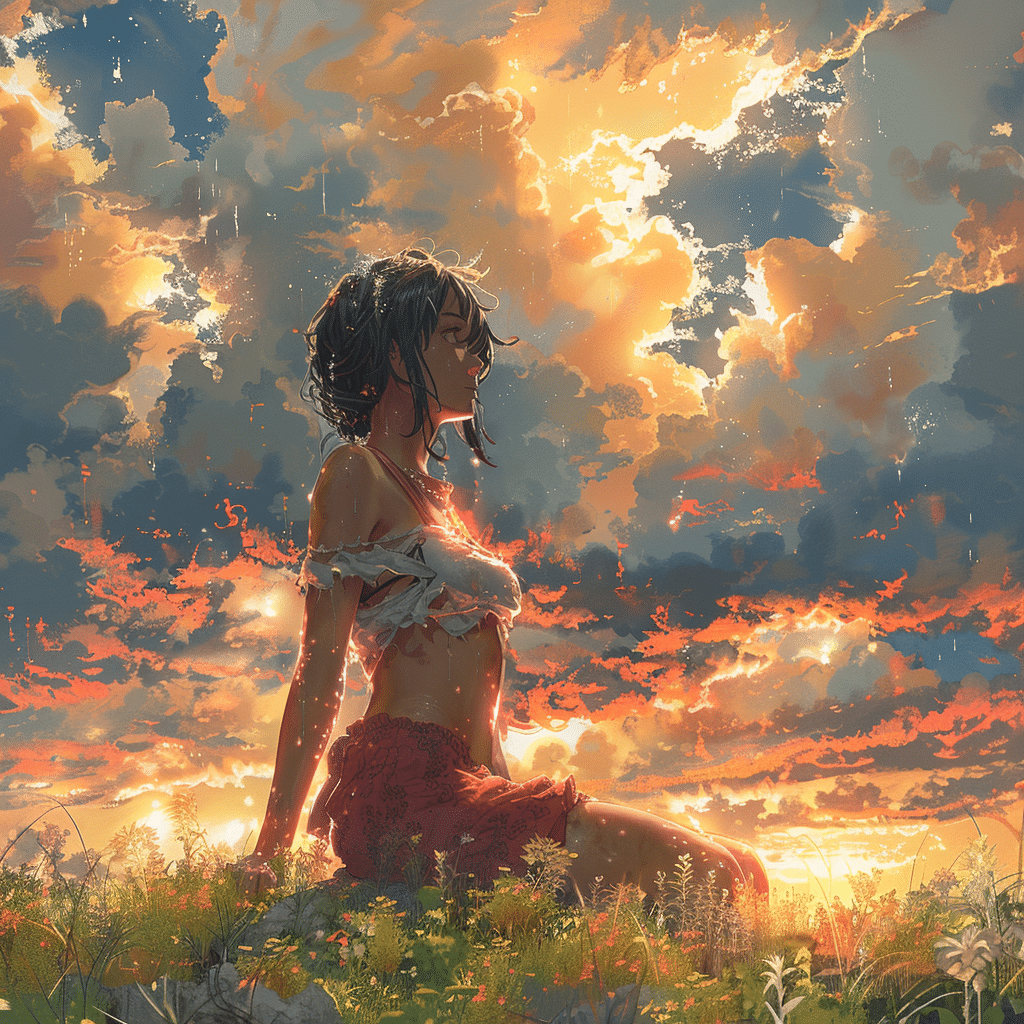Anime has long been a medium that transcends mere entertainment, diving deep into the human psyche and emerging with narratives soaked in emotional complexity. Among these narratives, a particular theme resonates with a heart-tugging clarity: Aizetsu. This profound sentiment isn’t just a fleeting shade on anime’s vast canvass; it’s a crucial palette that paints the sorrow and the shared human experience with striking depth.
A Literary Journey through Aizetsu: Uncovering Anime’s Heartache
To understand the tapestry of Aizetsu in anime, one must first grasp its threads. Originating from the Japanese terms 哀 (ai, “sorrow”) and 絶 (zetsu, “to discontinue”), Aizetsu is the embodiment of deep sorrow, often arising from profound loss or unfulfilled desires. In anime, Aizetsu captures the spirit of melancholy that permeates through the characters’ struggles, etching itself into the fabric of each story.

Aizetsu and Chigiri Hyoma: Tragic Ties that Bind
The tale of Chigiri Hyoma is a quintessential plot thick with Aizetsu elements. His narrative web is one where each strand is soaked in the dew of heartache:
– Audiences witness Chigiri grappling with fragments of a shattered past, a textbook case of Aizetsu where the promise of what could have been haunts the confines of the story.
– As viewers dissect Chigiri’s arc, they’re often left with a lingering empathy – a testament to Aizetsu’s power.
– The critical world applauded the authenticity with which Chigiri’s Aizetsu-tinged journey unfolded, gripping fans and pulling at their heartstrings.
| Characteristic | Detail |
|---|---|
| Name | Aizetsu (哀絶) |
| Literal Meaning | Sorrow |
| Appearance | Tall, muscular young man with shoulder-length hair; narrow, deep blue eyes; two curved horns |
| Significance | Represents the emotion of sorrow in a group displaying various primal emotions |
| Emotion Forms | Part of Hantengu’s multiple forms that manifest different emotions |
| Engravings | “Upper Rank” (上弦, Jōgen) and “Four” (肆, Shi) on his eyes |
| Associated Emotions | Sorrow (Aizetsu), Fear (Hantengu), Anger (Sekido), Pleasure (Karaku), Joy (Urogi) |
| Unrevealed Forms | Hatred (Zohakuten), Resentment (Urami) |
| Defeated By | Genya Shinazugawa |
| Method of Defeat | Genya speared Aizetsu to a tree, consumed his flesh, and decapitated him |
| Episode Appearance | Episode 3 (specific episode where forms are revealed; not necessarily Aizetsu’s first appearance) |
| Alternative Readings | Aitsū (哀痛) for sorrow |
| Pleasure Counterpart | Karaku (快楽 or 愉楽 Yuraku) |
| Hatred Counterpart | Zohakuten (憎悪) |
| Resentment Counterpart | Urami (恨み) |
| Prime Emotion | Sorrow is one of the primal emotions associated with Aizetsu |
Diving into Aizetsu: Demon Slayer’s Haunting Beauty
Demon Slayer stands tall as a breathtaking ode to Aizetsu:
– The series explores these themes through its protagonist’s trials and the demons riddled with their own grief and loss.
– Fans of the show were especially moved by the confrontation between Genya and Aizetsu. The sorrow-laden face-off, culminating in Genya’s gruesome victory, displayed the quintessence of Aizetsu in the strife against inevitable tragedy.
– The Aizetsu theme wielded by Demon Slayer reverberated through the anime community, instigating fiery discussions and heartfelt testimonials of its impact.

Gojo Teen and Aizetsu: A Contemporary Melding of Sorrow and Youth
Among the waves of high school anime, none blend the joyful veneer of adolescence with the undercurrents of sorrow like Gojo Teen:
– It perfectly balances these emotions, showing that youthful cheer can coexist with, yet never overshadow, the nuanced shades of Aizetsu.
– The series challenges characters with the task of fostering hope amid somber realities, shaping them into figures that resonate with viewers across the globe.
Beyond the Blade: Karaku’s Aizetsu-infused Storyline
The somber dance of Karaku’s blade cuts deeper than flesh; it carves a narrative rich in Aizetsu:
– Intricately capturing Karaku’s descent and resurgence, the anime showcases how triumph and Aizetsu can be two sides of the same coin.
– Viewers clung to every moment of his journey, with the layers of loss and redemption acting as a magnifying glass to the complexities of his motivations.
The Katana Man Chainsaw Man: A Cutting Edge of Despair
The adrenaline-packed Chainsaw Man introduces Katana Man, adding a fierce edge to the concept of Aizetsu:
– His tale mingles Aizetsu with raw action, evoking a turbulent collision between sorrow and savagery.
– The cultural critique here lies in the audience’s avid response, reaffirming the universal allure of tragedy, even in the most violent of stories.
Kiana Kaslana’s Aizetsu: The Struggle Beyond the Battle
In the throes of combat and chaos, Kiana Kaslana encompasses the spirit of Aizetsu:
– Her battles are marred with an internal struggle mirroring the external, a reminder that the war within can be just as ferocious.
– Fans are drawn to Kiana’s perseverance, finding a poignant connection to her tribulations that transcends the screen.
Sekido’s Silence: The Unspoken Aizetsu of an Antagonist
Understanding Sekido demands a plunge into the depths of Aizetsu where even villains are cloaked in humanity:
– His brand of Aizetsu unfolds in silences and subtleties, challenging perceptions of what fuels an antagonist’s rage.
– Through Sekido, anime illustrates that sympathetic villainy extends the boundaries of Aizetsu, revealing the sorrow that can drive even the most hardened hearts.
Starved Eggman’s Existential Aizetsu: A Metaphor for Modern Malaise
Starved Eggman emerges as modern anime’s symbol for Aizetsu:
– He captures the existential angst of an era, painting a broader picture of societal sorrow that resonates with the zeitgeist.
– Critics laud the character for blending Aizetsu with existentialism, cementing the trope’s relevance in addressing today’s universal struggles.
Sugoi Dekai and Aizetsu: The Juxtaposition of Greatness and Grief
Anime often frames greatness with an underbelly of sorrow, and the term Sugoi Dekai exemplifies this duality:
– It wrestles with the notion of whether grandeur can coexist with Aizetsu without diminishing its profound impact.
– The audience is tantalized by this paradox, fostering vigorous debates on how these opposing elements interplay in the anime narrative.
Aizetsu through Sylphiette’s Eyes: A Fantasy of Loss and Love
Fantasy anime offers a fertile ground for Aizetsu, and through Sylphiette’s emerald gaze, we explore its intricacies:
– The character breathes life into romantic Aizetsu, gracefully navigating through the complexities of loss and affection.
– Her story invites audience introspection, demonstrating how Aizetsu can elevate a romance beyond mere escapism to something deeply reflective.
Urogi’s Arc: Aizetsu as a Pathway to Empathy
In the vibrant tapestry of character arcs, Urogi provides a unique foray into Aizetsu:
– His journey offers a lens to view emotional intelligence and its interplay with Aizetsu, revealing how anime can construct narratives that foster empathy.
– Urogi’s story has encouraged viewers to embrace emotional depth, normalizing sensitive storytelling in the anime universe.
A Cut Above: Innovative Narratives and the Future of Aizetsu in Anime
Exploring new and upcoming anime, we forecast the course of Aizetsu:
– Investigation into emerging series reveals how narrative innovation continues to deepen Aizetsu’s roots.
– With trends and potential thematic saturation on the radar, the anime industry steers towards sustainable storytelling that nurtures emotional complexity.
Conclusion: Aizetsu’s Lasting Legacy in the Anime World
In retracing our steps through this expedition of Aizetsu, what becomes evident is its undeniable potency:
– Aizetsu is an integral narrative tool that allows a more profound connection to character experiences, enriching the anime both in depth and breadth.
– The theme’s global resonance highlights the universality of anime as a medium and its ability to reflect shared human narratives.
Here’s to Aizetsu – the soulful whisper in anime’s vibrant shout – reminding us that, within every aspect of the medium, there lies a tenderness that silently connects us all to the animated world’s beating heart.
Exploring Aizetsu: Anime’s Unique Take on Melancholy and Loss
If you’ve taken a deep dive into the emotional landscapes of anime, you’ve likely encountered the poignant concept of ‘aizetsu’. This term doesn’t just scratch the surface of sorrow; it pierces right through, revealing the intricate layers of grief and the beauty that can spring from it. Ready to unravel some engaging trivia and little-known tidbits about ‘aizetsu’? Hold onto your hats, ’cause we’re about to take a journey through anime’s heartrending alley.
The Age of Emotions: Growing Up with Aizetsu
Ever thought about how characters embody ‘aizetsu’ at different stages of life? Take, for instance, How old Is Yuta in Jjk season 2. As he grapples with the weight of his abilities and the losses he encounters, he portrays a complex shade of ‘aizetsu’ that’s relatable to many of us as we stumble through our own growing pains. Talk about teen angst taking a supernatural spin!
Not Just a Pretty Face: The Depth Behind the Characters
Now, don’t get it twisted. ‘Aizetsu’ isn’t about just the somber-looking types. Sometimes, it’s the characters you least expect, characters who would fit right into The hot chick Actors roster, that surprise us with moments of profound sorrow. They remind us that beyond the glamour and laughs, there’s an ocean of depth, and ‘aizetsu’ often lurks just beneath their stunning surfaces.
The Color of Sorrow: Aizetsu in Anime Aesthetics
Have you ever noticed how certain colors in anime can evoke a sense of ‘aizetsu’? Take the iconic raspberry beret, for example. A color or accessory might initially grab our attention for its pop and sparkle. Still, in the context of ‘aizetsu’, it transforms into a symbol of nostalgia and bittersweet memories, painting a poignant stroke on the canvas of anime storytelling.
Learning from Aizetsu: Museums of Melancholy
Diving deeper into ‘aizetsu’, imagine if we could stroll through The best Museums in DC dedicated to this anime phenomenon. Each exhibit would showcase different facets of ‘aizetsu’—from tear-jerking plot twists to beautifully rendered scenes where characters face the abyss of despair. It’s not just about feeling sad; it’s about learning and growing from these artistic expressions of sorrow.
Lost in Translation: The Messaging of Aizetsu
You know how sometimes you get a text that leaves you scratching your head, asking, What Does Rcs message mean? Well,aizetsu’ often brings with it an emotional complexity that can be just as perplexing. It’s the kind of heartache that transcends words, leading viewers to a deep well of empathy and understanding—no fancy messaging required.
The Tech of Tears: A.I. and Aizetsu
Lastly, you’ve heard of AI artificial intelligence, but ever wondered how it might interpret ‘aizetsu’? Could a robot ever truly comprehend the depth of anime’s sorrow? As creators blend tech and tears, we’re on the edge of our seats, waiting to see if AI can someday replicate the human intricacies tied to the profound emotional experiences that ‘aizetsu’ embodies.
Ready to wipe your eyes and explore even more curious and captivating themes within the vibrant world of anime? Keep an eye out; ‘aizetsu’ is just one piece of the vast, evocative puzzle that makes animation such a rich and enthralling medium. Who knew that a little sorrow could teach us so much about heart, art, and the human condition?

What emotion is Aizetsu?
What emotion is Aizetsu?
Oh boy, if you’ve been keeping up with episode 3, you’ll know that Aizetsu is the embodiment of Sorrow. They nailed it with that sorrowful look, I’ll tell you that!
Who is Aizetsu?
Who is Aizetsu?
Aizetsu, right? He’s this mighty tall and muscular dude with shoulder-length hair and those intense blue peepers. He’s got “Upper Rank Four” written all over him—quite literally, with those kanji on his forehead and cracked markings. Plus, he’s sporting a pair of horns that really make a statement.
What does the name Aizetsu mean?
What does the name Aizetsu mean?
Let’s break it down – Aizetsu (哀絶) can send shivers down your spine because it translates to “Sorrow.” Talk about wearing your heart on your sleeve, or in this case, your name!
How did Genya defeat Aizetsu?
How did Genya defeat Aizetsu?
Genya went full beast mode on Aizetsu! After serving up a prayer, he introduced himself, not just with words but with a gnarly spear to a tree and literally ripping the guy’s head off. Talk about a gruesome goodbye!
Who is the saddest person in Demon Slayer?
Who is the saddest person in Demon Slayer?
Real tear-jerker alert! Even with all those gloomy faces in Demon Slayer, Aizetsu takes the cake for being Mr. Sorrow himself. Can’t get any sadder than being the personification of it, right?
Why does Hantengu look old?
Why does Hantengu look old?
Well, Hantengu’s got that ancient vibe going on because he represents the primal fear that ages like fine… terror? It’s like all the years of fright have caught up with him and decided to never leave.
Is Aizetsu a demon?
Is Aizetsu a demon?
You betcha, Aizetsu is no angel! This demon is rolling heavy with the “Upper Rank Four” gang, and he’s got the horns to prove it.
Who killed Aizetsu?
Who killed Aizetsu?
Genya’s the man with the plan who took down Aizetsu. After a quick chat and a prayer, he went all out, turning Aizetsu into the latest headless fashion statement.
Who is the weakest Hashira?
Who is the weakest Hashira?
Ah, the weakest Hashira? Now, that’s a hot debate topic among fans. Some say it’s subjective, but whispers in the fandom suggest it might be… Well, let’s just say every Hashira has their unique strengths and weaknesses, shall we?
How do you pronounce Aizetsu in English?
How do you pronounce Aizetsu in English?
You’ll want to get this right – it’s pronounced “Ah-ee-zet-su.” Easy peasy, right? Just roll with it, and you’ll sound like a pro in no time!
Is Tanjiro a real name?
Is Tanjiro a real name?
Sure thing, Tanjiro is as real as it gets when it comes to names in Demon Slayer. Not your everyday John Doe, but it’s got that authentic Japanese ring to it.
What is Nezuko’s name in Japanese?
What is Nezuko’s name in Japanese?
Nezuko, the cutie who’s always got Tanjiro’s back, rocks her name in Japanese as “ねずこ.” Simple, sweet, and to the point.
Who killed Mitsuri?
Who killed Mitsuri?
Okay, no spoilers, but let’s just say Mitsuri met her fate at the hands of a not-so-nice character. The Demon Slayer verse can be a brutal place, huh?
Why can Genya turn into a demon?
Why can Genya turn into a demon?
Genya’s got a bit of a party trick – he can tap into demon powers by munching on them! I mean, if you are what you eat, Genya takes it to a whole new level.
What killed Genya?
What killed Genya?
This is a doozy – Genya faced his end in a clash of titans. It’s a tough world in Demon Slayer, and sometimes life deals you a fatal blow.
What is Aizetsu’s personality?
What is Aizetsu’s personality?
Aizetsu, our sorrowful strongman, has a personality that’s… well, a bummer. As you’d expect, he’s all about that sorrow life, looking like he’s carrying the weight of the world on his shoulders.
What emotion is Hantengu?
What emotion is Hantengu?
Hantengu’s the grandfather of fear in Demon Slayer. His whole vibe screams “I’ve seen some stuff,” and it’s all about the frights.
What were Hantengu’s emotions?
What were Hantengu’s emotions?
Now, Hantengu’s emotions were like a roller coaster – we’re talking Fear, Anger, Pleasure, Sorrow, and Joy. But keep your eyes peeled! There’s still Hate and Resentment waiting in the wings.
Why is Hantengu always crying?
Why is Hantengu always crying?
It’s simple – Hantengu’s a crybaby of eternal fear. Looks like he can’t help but leak a waterfall every time he’s on screen. Poor fella just oozes anxiety!





















